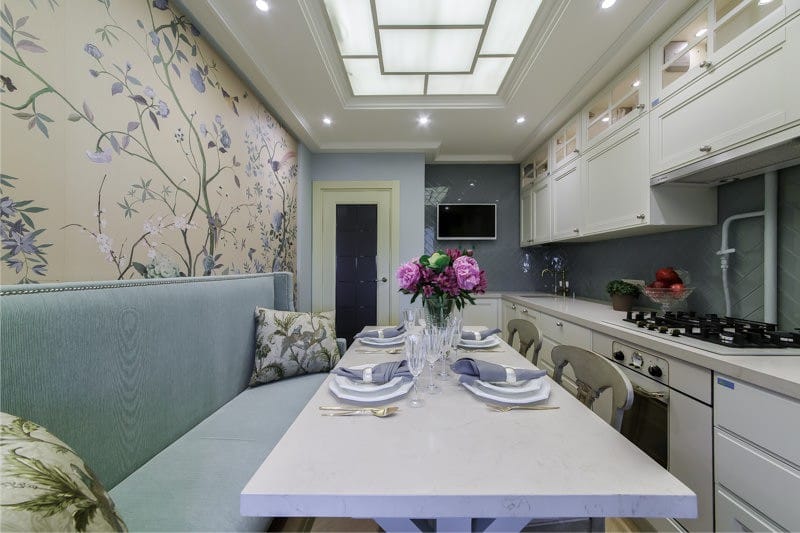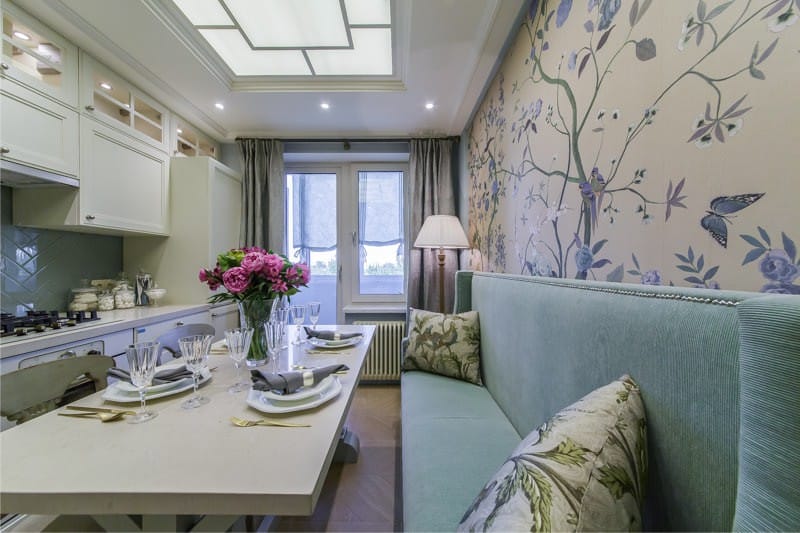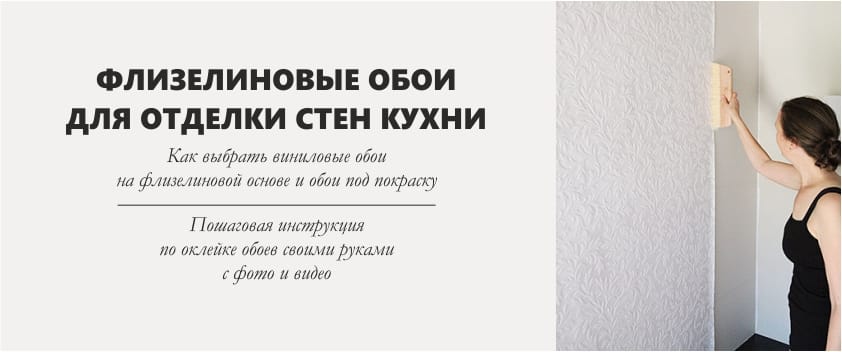
Flizelin is a synthetic material made of compressed cellulose fibers.
Flizeline wallpaper called:
- non-woven wallpaper for painting – consist only of non-woven fabric and, as a rule, have a relief embossing or pattern;
- vinyl wallpaper on a non-woven basis – in this case, the vinyl layer plays a decorative protective role, and the non-woven linen plays the role of a substrate.
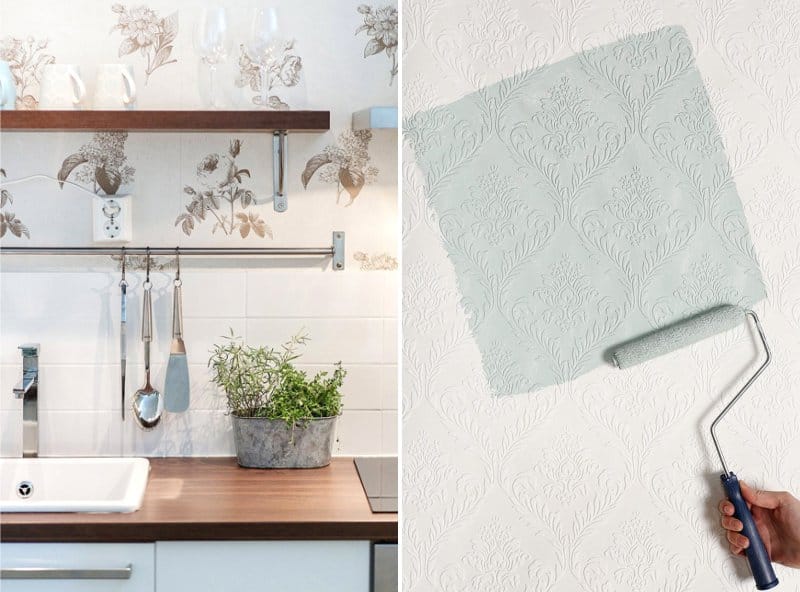
For the finishing of the kitchen, any of these types of coatings will work, because the non-woven fabric is a material that has more pluses than minuses.
If you are still in doubt – help for the buyer
Pros of non-woven wallpaper (further FD) and comparison with other types of wallpaper:
- The main plus: unlike all varieties of vinyl wallpaper on paper basis, the FO “breathe”, and therefore, under them can not form a fungus and mold.
- but here there is one nuance – standard vinyl wallpaper on a non-woven basis, too, “do not breathe” because of the upper vinyl layer, but you can buy so-called “solid” vinyl wallpaper that “breathe”, and wash, and look beautiful.
- Vinyl wallpaper on a non-woven basis can last up to 15 years in excellent condition, not tarnished from ultraviolet.
- All FD are moisture resistant and can be wiped with a moderately damp rag without the use of aggressive household chemicals, but washable types of FO are moisture-repellent, which means they are not afraid of washing with a damp cloth with slightly alkaline solutions.
- Flizelin, unlike vinyl, does not smell.
- And unlike the paper base – does not stretch from the glue in the process of pasting, so you will easily join the drawing.
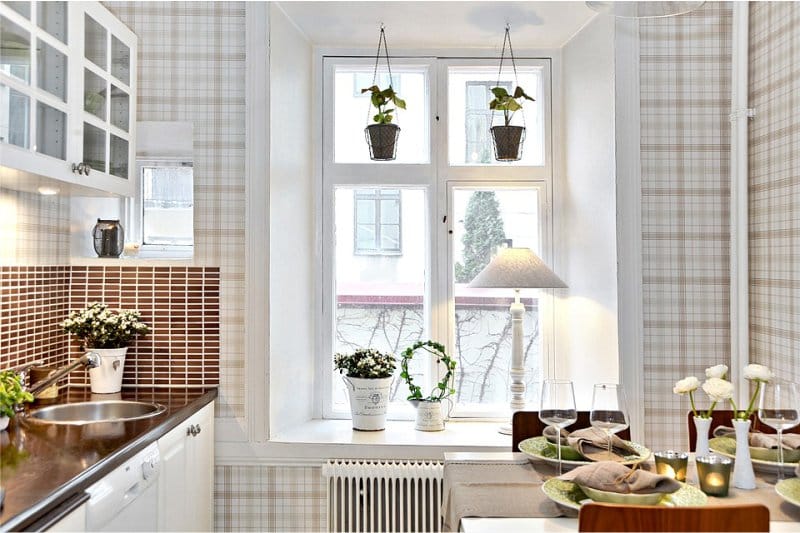
- Before you glue the non-woven wallpaper, the wall does not need to be brought to an ideal state – due to its density and relief, the FD hides small defects like bumps or cracks up to 2 mm.
- Pasting with non-woven wallpaper does not require the application of glue and on the canvas, and on the wall – it is enough to apply it only to the wall, which means that dirt and glue consumption will be less.
- FDs tolerate temperature changes and high humidity.
- Wallpaper for painting can carry 8-10 cycles of coloring, that is, if you want, you can easily update the walls of your kitchen.
- Non-woven fleece, unlike paper, is flame retardant.
- And FD have soundproofing properties.
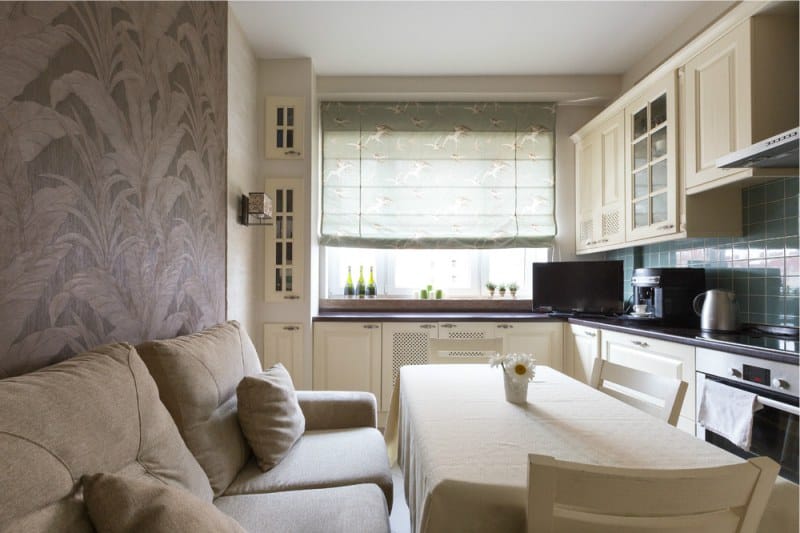
So, we have counted 11 advantages, but there are disadvantages in FD:
- non-woven wallpaper for painting because of its relief accumulate dust, so they must be periodically cleaned or vacuumed;
- In addition, the top relief layer is subject to mechanical damage, that is, scratches and dents may remain on the coating;
- cheap DOF can emit formaldehyde, so it is better not to save in this matter.
General recommendations:
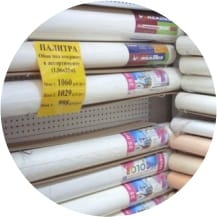
- Relief DOFs hide the unevenness of the walls; in addition – they are denser and stronger than smooth ones;
- Quality FO should not smell of acetone and have an oily surface;
- Be sure to buy the FO from only one lot (number is indicated on the package). Even if in the store it seems to you that the “multi-party” wallpaper is exactly the same, believe me, on the wall the difference in semitone will be noticeable. The difference in the shades of the same wallpaper from different parties is not a marriage, but a feature of production;
- Adhesive for non-woven wallpaper should be moisture-resistant and high-quality (do not contain starch and PVA in the composition) and better with a color-indicator.
- You can calculate the consumption of rolls consultant, you only need to measure the height of the ceilings and the perimeter of the kitchen taking into account the protrusions and niches in advance, while you do not need to subtract the sizes of windows, doors and standing kitchen set – all surpluses will be useful as a stock.
And now let’s move on to practice, that is, to flocking wallpaper by yourself.
How to glue non-woven wallpaper – step by step instructions
Before you glue the non-woven wallpaper, you need to find a partner and prepare the following tools and materials:
- adhesive for non-woven wallpaper and packaging for its dilution;
- measuring instruments: plumb and level, measuring tape, marker for marking;
- wallpaper spatula;
- clean smooth roller to smooth the fabric (preferably rubber);
- Paint brush for glue;
- sponges and clean rags for cleaning, scissors, cutter, stepladder.
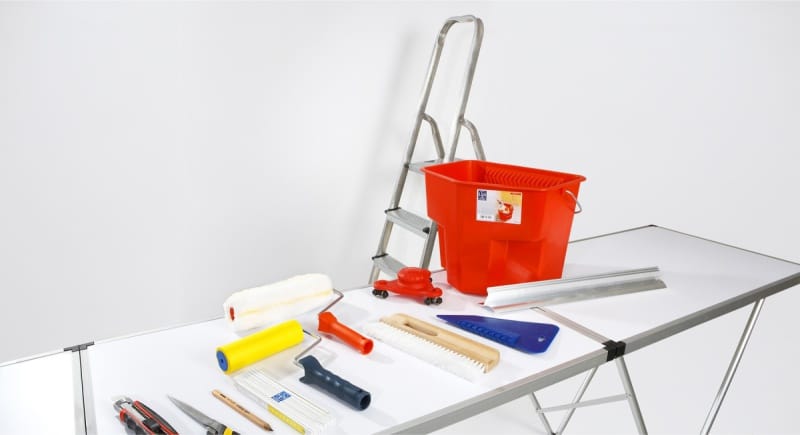
Important! Some FDs can be translucent. Attach one sheet to the wall and make sure that the base does not shine out from under it. If the wall is seen through the wallpaper, then the wall needs to be painted. Only after drying the paint is the gluing of wallpaper on a non-woven basis.
Step 1. Preparation of the wall
In the process of carrying out the preparatory work, the old coating must be dismantled – flizeline wallpaper can not be pasted on top of the already existing material. After removing the previous layer of wallpaper, the surface of the wall is sanded. Plastering the wall is completely unnecessary – the only exception is found deep cracks or potholes. After sanding, you will only have to wipe the dust on the wall with a damp rag and wait until it dries.
Step 2. Apply the markup
Markings must be drawn using a building level or a plumb line. From what point is it better to start drawing the markup and how to correctly glue the non-woven wallpaper? Most often sticking is from the window. But many professionals recommend the opposite – start with the most distant wall from the window, moving, in fact, to the window opening.
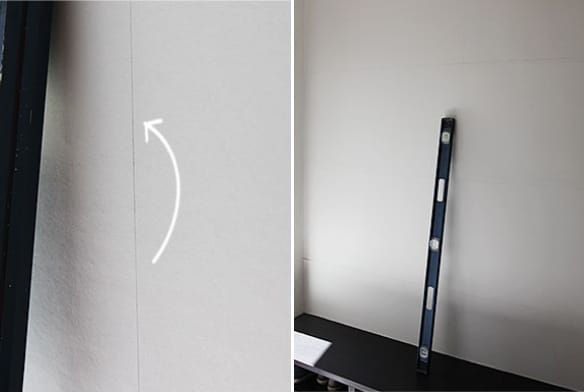
Step 3. We cut the roll into linen
There are 3 options for cutting the canvas, you can:

- cut the stripes directly on the wall, applying a roll and marking the cut line (taking into account the allowance of 10 cm);
- cut on the table or on the floor from the calculation: height of the ceiling + 10 cm;
- if the wallpaper has a picture, the cut must take account of the rapport, that is, the step of the repeating pattern. Typically, this value is indicated on the package, but you can check the correctness of the data by finding duplicate items.
- the number of strips to be cut is determined along the perimeter of the room, taking into account the protrusions, niches and docking of the figure.
Step 4. Prepare the glue
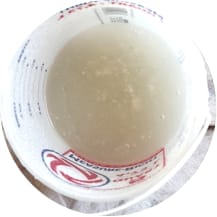
Before you paste the non-woven wallpaper, it is important to properly prepare the adhesive mixture. Here the main thing to do everything exactly according to the manufacturer’s instructions.
- Good glue should dissolve no more than 5 minutes before the gel-like consistency without the formation of lumps.
- The composition is prepared by dilution exclusively in cold water. If you add warm water, the glue will form lumps that will remain bulges under the canvas.
Step 5. Let’s start gluing
We apply glue with a brush on the wall just by going beyond the boundaries of the marking (in principle, this can be done with a roller). Now start to glue the strip. How to paste fliseline wallpaper smoothly?
- The main thing – to impose a strip, aligning it exactly on the markup, but so that to close the markup itself. The allowance for the ceiling skirting should be approximately 5 cm as shown in the photo below.

First you need to glue and easily smooth all the canvas at once – you need to do it together with your partner. Next, you should finally fix the wallpaper, distribute the glue evenly and release the air. To do this, we sweep the left and right on the ceiling under the ceiling with a rubber roller. Then, we begin to smooth the entire strip on the basis of the “Christmas tree” principle: roll the roller vertically in the center, then from the center to the edges, “drawing” the branches of the Christmas tree. Excess surplus of adhesive should be wiped off immediately with a cloth.
Finally, we cut off the allowances from above and below and proceed to the next strip.
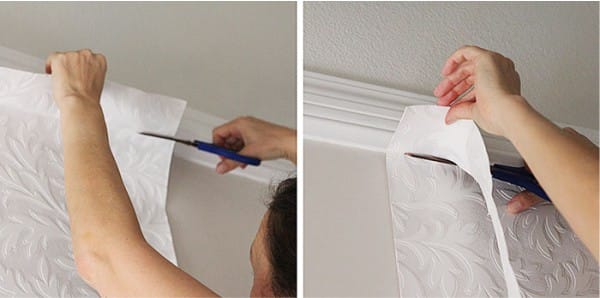
- Cloths need to be leveled butt, leaving no stitches or overlaps.

- In the corners of the canvas are glued with a slight overlap, but also taking into account the pattern.
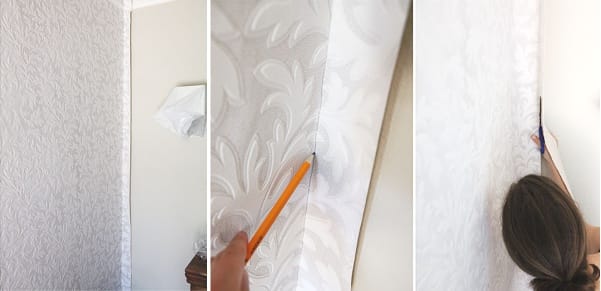
- When pasting the walls behind the radiators, the strips are glued at a set distance of 10 cm.
More on how to glue non-woven wallpaper in difficult places: niches, ledges, doorways read here.
Step 6. Color the walls
For non-woven wallpaper for painting, water-based paints – acrylic or water-based paints – are suitable. The question of staining itself is a topic for a separate article, so we invite you to familiarize yourself with the step-by-step master class on painting walls.
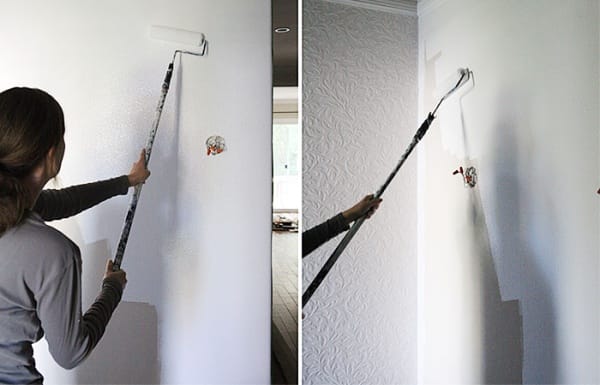
In addition to the material – a visual video on how to properly glue non-woven wallpaper with your own hands.


